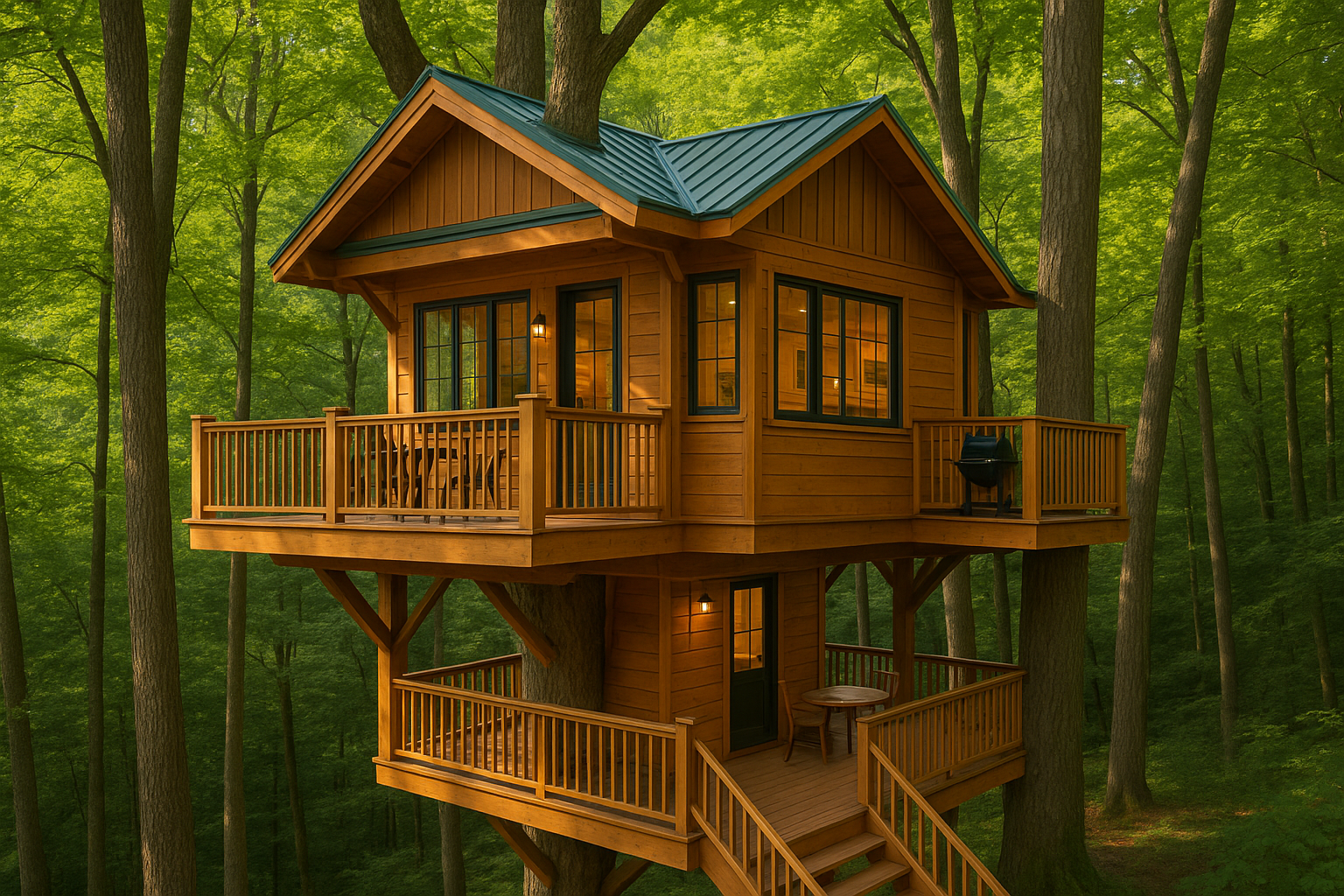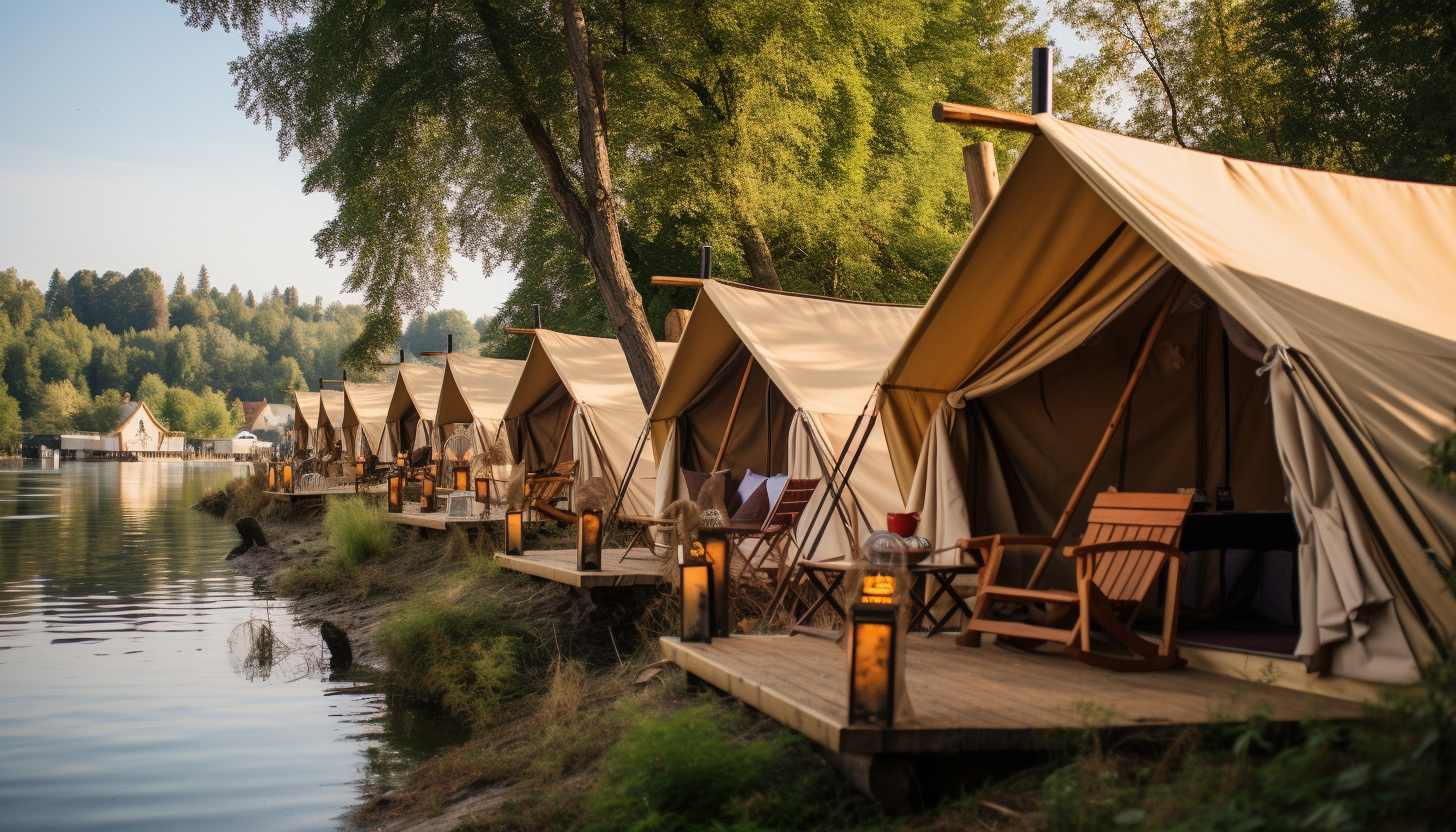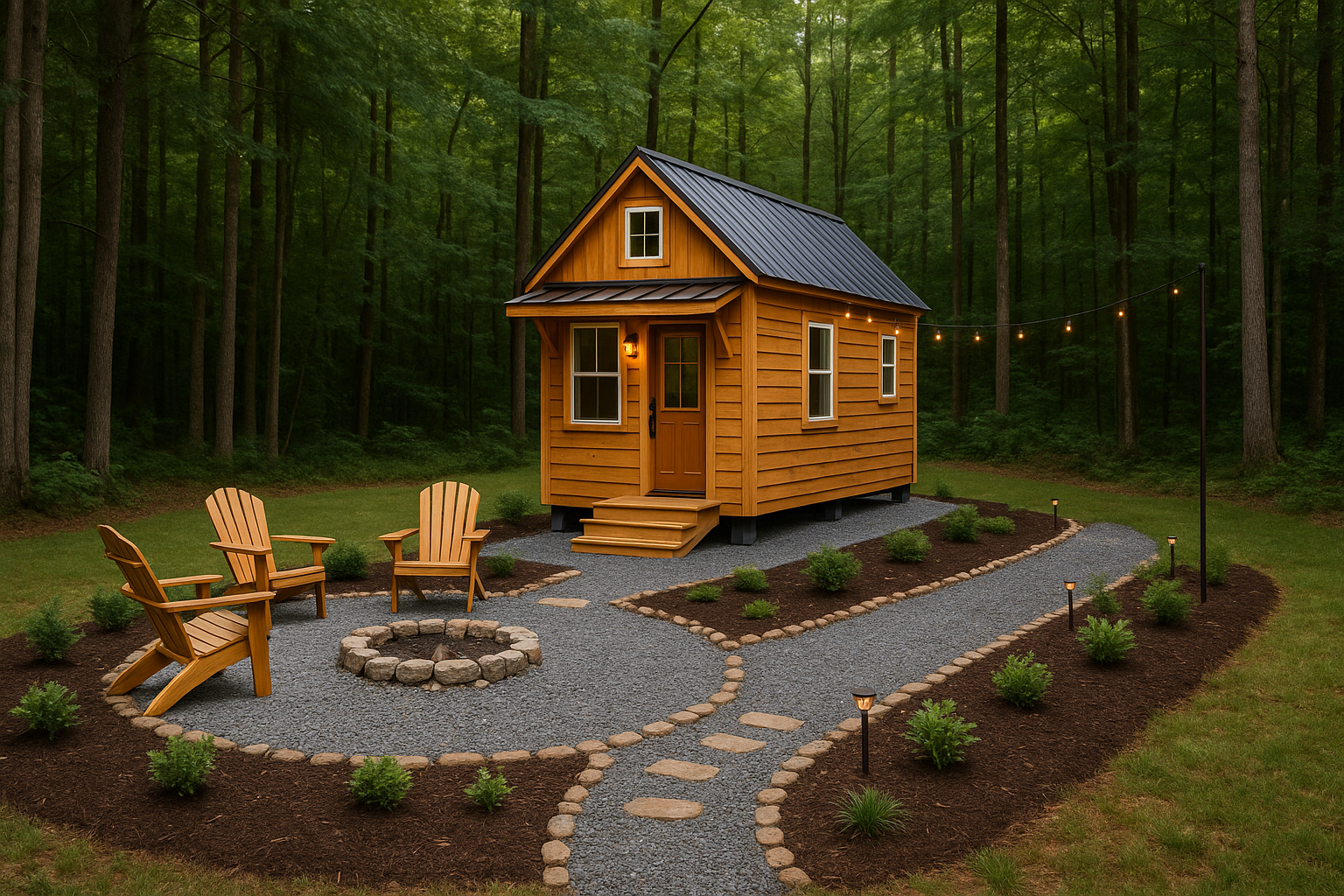Regardless of whether you’re building a treehouse as an investment or for you and your family, you’ll learn the basics of a treehouse investment.
The Ultimate Guide to Building a Tree House: Design, Cost, Construction, and Comfort
Building a tree house is a childhood dream turned adult ambition for many, a thrilling journey into an off-grid escape, a cozy guesthouse, or a unique home office nestled high above the ground. Whether you’re constructing a simple platform for weekend fun or designing a fully functional home in the canopy complete with plumbing and electricity, this adventure requires careful planning, materials, and a healthy dose of excitement. This guide walks you through everything you need to know: from structural support and construction plans to adding modern comforts like kitchens and bathrooms, and even buying pre-built units.
1. Choosing the Right Tree and Structure
The foundation of any tree house is, of course, the tree (or trees). Ideally, you want a hardwood species with a sturdy trunk and deep roots, such as oak, maple, beech, or Douglas fir. The tree should be mature (typically at least 50 years old), healthy (no cracks or fungus), and have a trunk diameter of at least 12 inches.
Tree House Support Structures:
You have three main design options:
- Post and Beam (Ground-Supported): Posts support most of the weight, reducing pressure on the tree. Ideal if the tree is too small to support a whole house.
- Tree-Supported: The entire house is bolted to the tree trunk or branches using specialized treehouse attachment bolts (TABs).
- Hybrid Support: Combines both tree and ground posts for added stability and flexibility.
For higher tree houses, you’ll need additional bracing, diagonal supports, and multiple attachment points. Use floating brackets and suspension hardware that allows the structure to move with the tree’s natural sway, reducing damage to both the tree and the house.
2. Cost of Building a Tree House
The cost varies widely based on size, height, features, and whether you build it yourself or hire a contractor. Here’s a rough cost breakdown:
- Basic DIY Platform (No walls, small deck): $500 – $2,000
- Mid-Sized Tree House (walls, roof, ladder/stairs): $5,000 – $15,000
- Luxury Tree House (fully enclosed, plumbing, electrical, insulation): $20,000 – $100,000+
Labor accounts for a significant portion if hiring professionals. You can save substantially by doing the work yourself or buying pre-assembled kits.
3. What You’ll Need: Tools and Materials
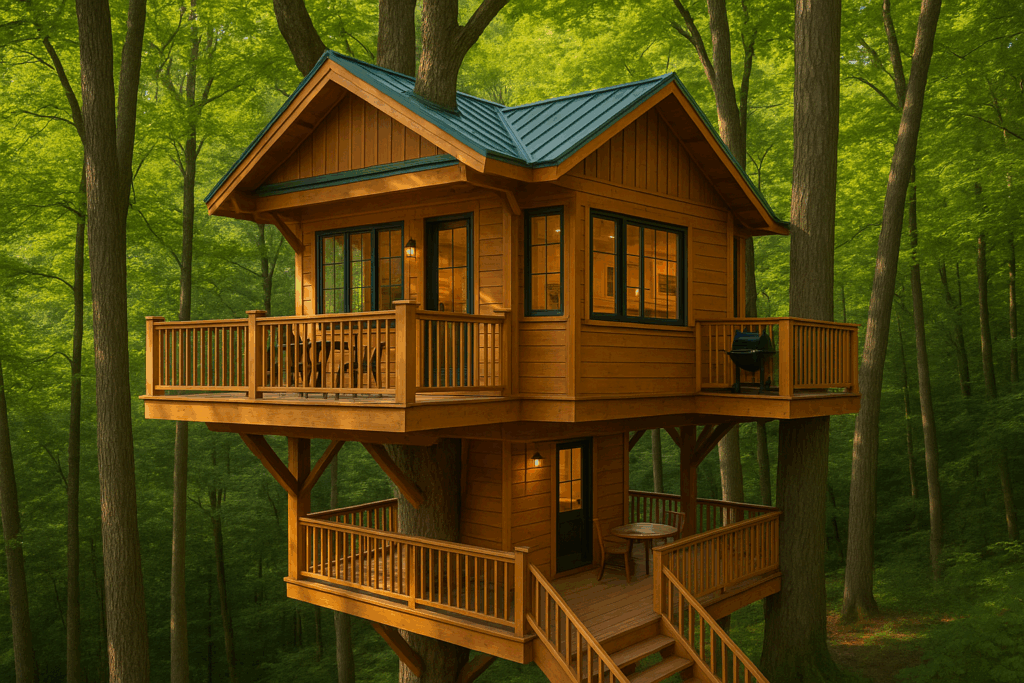
Tools:
- Circular saw
- Cordless drill
- Stud finder (for multi-tree structures)
- Wrenches and socket sets
- Level, measuring tape, ladder, safety harness
Materials:
- Pressure-treated lumber (joists, decking, wall framing)
- Treehouse attachment bolts (TABs)
- Lag screws, galvanized fasteners
- Waterproof roofing materials
- Plywood or sheathing
- Insulation (if you plan to add heating/cooling)
- Polycarbonate or wood-framed windows
- Optional: solar panels, composting toilet system, mini wood stove.
4. Easy Ways to Build a Tree House
If you want to keep it simple and affordable, follow these streamlined steps:
- Pick a low tree or short height (under 8 ft) to reduce the need for complex bracing or scaffolding.
- Build a ground-level platform first to practice construction basics and test design strength.
- Use prefab shed kits—mount them on platforms instead of building every wall from scratch.
- Stick with lightweight materials to reduce stress on your tree. PVC pipes, recycled wood panels, and aluminum roofing are ideal.
- Opt for a pulley-lift system instead of stairs if space is limited or for easier transportation of materials.
5. Including a Bathroom and Kitchen in Your Tree House
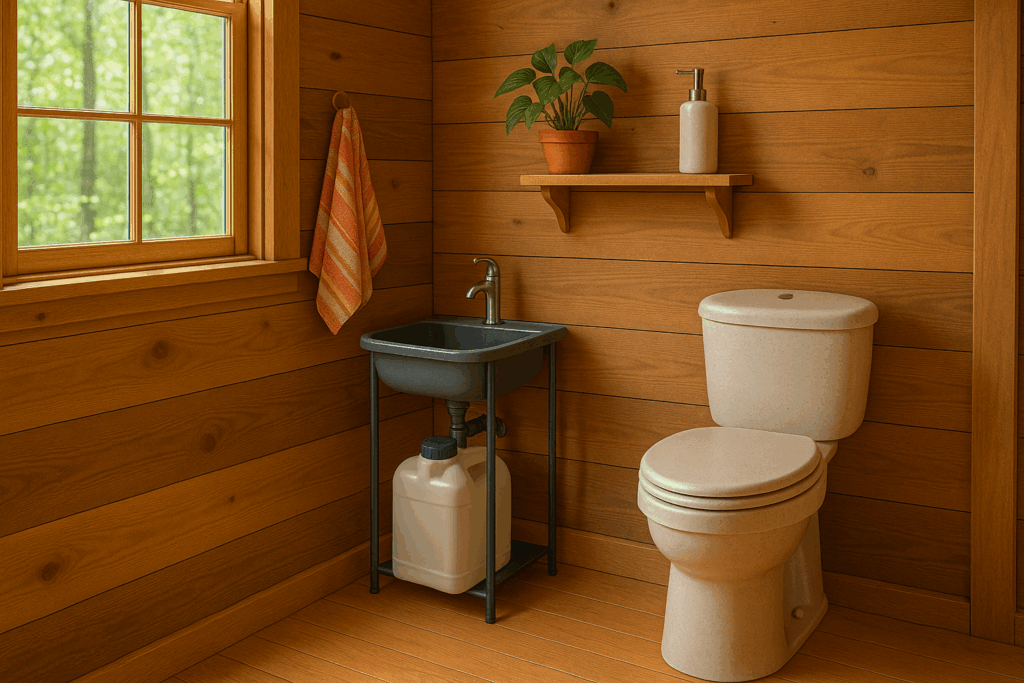
A luxury tree house isn’t complete without basic amenities. Here’s how to add them:
Bathroom Options:
- Composting Toilet: The most eco-friendly and convenient solution. Brands like Nature’s Head and Separett offer compact options.
- Gravity-Fed Outdoor Shower: Install a rainwater tank above the bathroom, paired with a solar water heater.
- Mini Plumbing System: For year-round use, you can run PEX pipes and connect to a septic tank or greywater system—just ensure the treehouse is well-insulated and winter-proof.
Kitchen Setup:
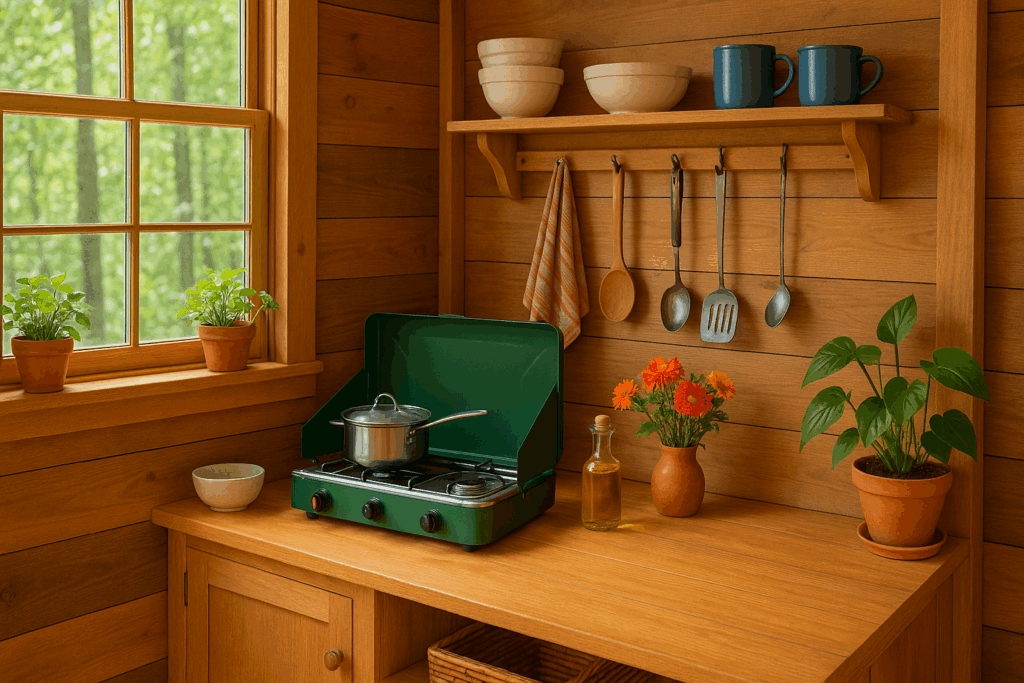
- Portable Propane Stove or Camp Kitchen: A minimalist and easy-to-use option.
- 12V Refrigerator or Cooler: Powered by solar panels or battery packs.
- Sink with Gravity-Fed or Pumped Water: Use a small greywater filtration system or drain to a safe disposal pit.
Add a fold-down table or built-in cabinetry to save space.
6. Tree House Building Plans
Many websites offer pre-drafted tree house plans with step-by-step instructions. Here are a few popular plan types:
- Platform Tree House: Just a deck, ideal for play or future expansion.
- A-Frame Cabin in the Trees: Ideal for snow-prone areas and simple rooflines.
- Octagon or Round Tree House: Visually stunning but more complex to build.
- Multi-Level Tree House: Best for large trees or multiple trees spaced within 15–20 feet.
Sources like TreehouseSupplies.com, DIY Treehouse Guide, and Instructables offer downloadable plans with materials lists and 3D renderings.
Buying Pre-Built Tree Houses or Kits
If you want to skip the design and build process, you can purchase tree houses that are either partially pre-assembled or fully built:
- Tree House Kits: Sold online by companies like Treehouse Supplies. Kits range from $2,000 to $20,000 and include walls, roof, and hardware.
- Custom-Built Tree Houses: Companies like Nelson Treehouse & Supply and The Treehouse Guys build high-end tree homes tailored to your location. Expect to spend between $50,000 and $250,000, depending on the size and features.
- Prefab Shed Units on Raised Platforms: Some small modular homes can be installed on elevated supports or stilts, creating a treehouse-like experience without the need for a live tree.
These options are ideal if you lack construction experience, don’t want to handle permits, or are short on time.
Final Thoughts
Building a tree house can range from as simple as a hammock with a roof to as complex as a fully equipped off-grid dwelling. Whether you take the DIY approach or hire pros, the key is to respect the tree, plan for safety, and enjoy the process. A well-designed tree house offers not just shelter, but a magical retreat where nature and imagination meet.
Treehouse structures are akin to several other categories of glamping.

